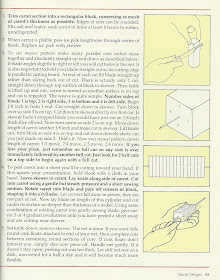The Pearl, Continued
News of the great pearl that Kino had found and the terrible
luck that it had brought him soon reached beyond La Paz. Fishermen in distant
cities told the story of his pearl, of Coyotito’s murder, and of the way Kino
and Juana never spoke of what had befallen them in the mountains.
Once the pearl was returned to the sea, Kino knew he would
have to rebuild his life. Because he had no canoe, and no brush house, he and
Juana simply slept upon the shore of the estuary, keeping warm with a fire made
from driftwood and eating fish Kino caught with a line he collected from among
the rocks. They spoke to no-one and no-one spoke to them; it was as if they
were ghosts on the periphery of the town. It was considered bad luck to
approach them, and even Juan Tomas stayed away.
Years passed in this way until the town’s memory of Kino’s misfortune
was buried along with the citizens who’d known of it first-hand. He became a
legend whom children fancied lived a very long time ago. The doctor choked to
death on a fishbone and was mourned by no-one, not even his cat. The beggars on
the church steps carried on begging for scraps. The town kept on breathing, and
children kept on being born, and pearls kept on being bought and sold and the pearl
fishermen knew that nothing could be done.
Eventually, Kino grew too old to wade into the sea, so to
keep himself occupied while Juana went into the town, he sat and carved
elaborate fishing nets out of carrots. In his dreams, each net held baby
Coyotito before that fateful scorpion bite, giggling as Juana prepared
corncakes. Then his son was replaced by a great pearl, glistening in the
moonlight. Then the pearl was replaced by a skull, bleached clean by the sea
and the sun. Then Kino woke up and carved another net, hoping each day to catch
a different dream.
Garnishing: A Feast
For Your Eyes, HP Books, 1987
Also from this book: Cabbage Christmas Tree, Randolph The Red-Nosed Rainmoose
Also from this book: Cabbage Christmas Tree, Randolph The Red-Nosed Rainmoose


